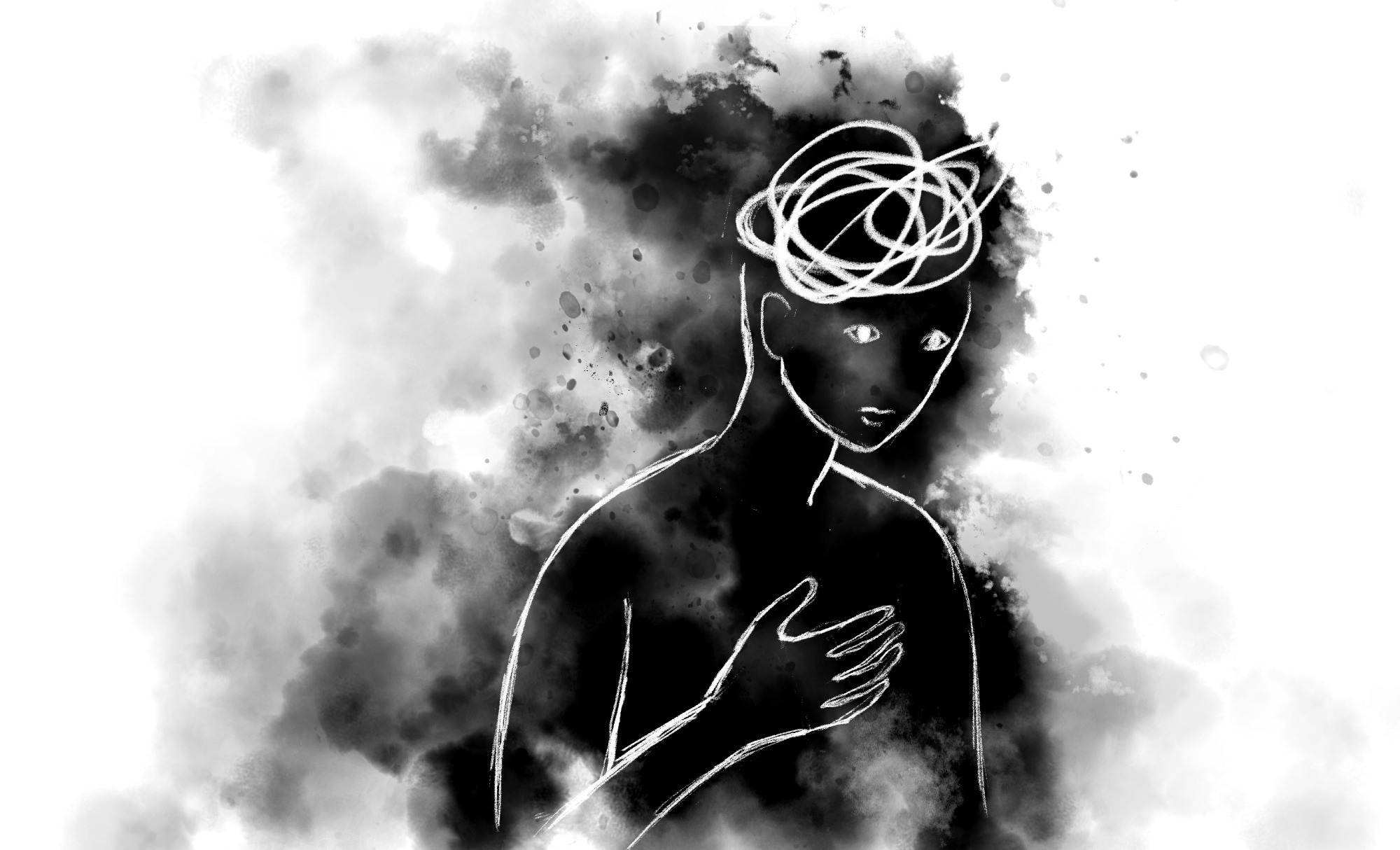Introduction to PTSD
What causes PTSD?
PTSD-related complications
Secondary trauma
PTSD diagnosis
Re-experiencing
Avoidance symptoms
Negative thoughts
Children
Recovery
Lingering symptoms
References
Further reading
Introduction to PTSD
Post-traumatic stress disorder (PTSD) usually occurs as a result of an individual experiencing a severely distressing, traumatic, dangerous, or catastrophic event. Other terms that have been used to describe PTSD in the past include soldier's heart, combat stress, battle fatigue, and shell shock. PTSD patients compromise their work and feel isolated from family, relatives, and friends, which is why they need early support and treatment.
 Image Credit: Panuwach / Shutterstock
Image Credit: Panuwach / Shutterstock
What causes PTSD?
The events that cause PTSD typically involve serious life-threatening injuries or sexual violence. Thus, victims of serious accidents, natural disasters, such as floods, earthquakes, or pandemics, such as the coronavirus pandemic, and sexual or physical assaults develop PTSD. It is common for soldiers, war victims, those living in war zones, and those who see people getting hurt or killed to develop PTSD. It is even possible to develop PTSD after being diagnosed with a life-threatening illness or seeing or giving a traumatic birth. Other types of events that can lead to PTSD include suffering or witnessing a terrorist attack; being attacked, assaulted, robbed, or mugged; and witnessing violence. In fact, around one-third of individuals who face such an event go on to develop PTSD.
On the contrary, losing a job or going through a rough patch in a relationship, no matter how devastating that might feel, are not usually the kinds of events that trigger PTSD.
PTSD can affect people of any age; however, some are at higher risk of developing PTSD due to a combination of risk factors. These include repeated trauma, such as living in a war zone for a prolonged period experiencing the battlefield and seeing death and active killing and having a history of mental illness, like anxiety or depression before encountering a traumatic event. Similarly, children abused in their childhood or who suffered a sexual assault are prone to developing PTSD. Individuals who experience severe trauma but do not receive enough support afterward, or lose their loved ones, often have extra life stresses after the trauma, such as the loss of a home or a job are also at higher risk of developing PTSD than others.
It is common to develop distressing or confusing feelings after a traumatic event. The feelings may not develop immediately, with a person initially remaining emotionally numb to the event. Eventually, physical and emotional reactions may develop, such as being unable to sleep or being upset easily. For many people, these emotions start to fade within a relatively short period of time. Still, if the feelings are extreme or last for more than a month, the affected individual may be diagnosed with PTSD.
Experts are unclear about why some people develop PTSD and others do not, but as with most mental health issues, it is likely to be due to a combination of factors. Some of these are described below.
- Inherited risk factors such as a susceptibility to anxiety and stress
- Abnormal regulation of the hormones related to stress
- A job that involves exposure to traumatic events such as the military or a career in paramedics
- Family history of PTSD or other mental health issues
- Lack of friends and family
PTSD-related complications
In some cases, people experiencing traumatic events might not develop PTSD but other mental disorders, such as depression, anxiety, and agoraphobia, all of which are just as common. Nearly eight in 10 people with long-standing PTSD develop substance abuse in an attempt to get over or cope with the memories; however, substance abuse leads to addictions in the majority of cases. Likewise, people with PTSD might also have generalized anxiety disorder or depression. Unfortunately, having more than one mental condition, referred to as co-morbidity can hinder recovery. Substance abuse is a common co-morbidity with PTSD, strongly correlated with obesity, diabetes, and cardiovascular diseases.
Secondary trauma
Often, people supporting someone who experienced trauma (e.g., a family member or friend) also experience symptoms of PTSD. This is known as 'secondary trauma.' It is as significant as the original (or primary) trauma that happened to someone else; thus, these individuals also need professional help.
PTSD diagnosis
Early diagnosis of PTSD enables effective treatment. Following events such as a natural disaster, the screening of individuals who may be at risk of PTSD is sometimes arranged. Opportunities to screen for and diagnose PTSD are also usually available following events such as sexual assault or murder. Diagnosing PTSD in children can be particularly problematic, but asking children directly about their experiences can improve the chances of correctly identifying and diagnosing the problem.
The primary health assessment determines a patient's current and past symptoms and family history. A doctor might also physically examine the patient to rule out other reasons for the observed symptoms.
The next round of health assessment is usually done by a psychiatrist or psychologist, who often enquires about the persistent symptoms and their intensity. They also ask for details of the triggering event. Notably, a full diagnosis of PTSD can only be made after at least six months after the trauma. Moreover, PTSD symptoms should appear severe enough to prevent one's ability to function socially or professionally at home or work.
 Image Credit: Motortion Films / Shutterstock
Image Credit: Motortion Films / Shutterstock
Often PTSD diagnosis is a relief for someone suffering devastating symptoms because it provides a rational explanation and a basis for initiating treatment. Research has shown that individuals with PTSD need ample support from family and friends to overcome the incapacitating effects of PTSD. While family therapy can help to fix strained relationships, in some cases, family members of PTSD patients might also need support on their own.
If an individual with PTSD has feelings of self-harm or suicide, this is a medical emergency, for which experts recommend visiting the nearest hospital emergency department.
While PTSD patients often find it difficult to overcome fear and memories of traumatic events, fortunately, PTSD is treatable. However, for its early diagnosis and treatment, it is vital to know its symptoms.
PTSD affects people differently, with symptoms ranging from subtle changes in daily routine, numbness, and withdrawal, to more severe physical anxiety and flashbacks. In most cases, PTSD symptoms manifest within a month of experiencing a traumatic event. However, they might sometimes take years to manifest after remaining dormant. Nevertheless, an adult must have at least one re-experiencing and one avoidance symptom, two arousal, and reactivity, and two cognition and mood symptoms to be diagnosed with PTSD.
Re-experiencing
Some re-experiencing symptoms of PTSD include:
- Repetitive flashbacks - reliving the trauma over and over, racing heart, sweating, impact everyday life, and people find it difficult to control them
- Nightmares
- Severe frightening memories of the trauma
Avoidance symptoms
Some avoidance symptoms of PTSD include:
- Triggering of discomforting thoughts by specific odors, sounds, words
- Avoiding thoughts related to the traumatic event
Those experiencing avoidance symptoms become numb and sometimes change their everyday routine and do not talk or think about the event.
On the contrary, some individuals show increased arousal accompanied by aggressive behavior. They are continuously and exceedingly alert, easily startled and irritable, and find it difficult to sleep or concentrate. Also, they keep scanning their surroundings for signs of danger.
Negative thoughts
The worse is the mood-altering or negative thoughts experienced by people with PTSD. Some experience a void in life and develop a sense of hopelessness about the future. They are unable to feel positive emotions, blame themselves and others unreasonably, and become emotionally detached from others. Some might not be able to find pleasure even in their favorite activities as they develop negative thoughts about themselves and the world. They find it difficult to recall the traumatic event, and some might feel intense anger, guilt, stress, or a feeling of being "on edge" all the time.
Children
PTSD also affects children and teenagers; however, they experience PTSD symptoms with some differences.
Young children become unusually clingy with parents, more irritable, aggressive, or throw extreme tantrums. Like adults, they, too, find it difficult to concentrate and sleep. In a severe case, children forget or avoid talking but act out the event during play. Other symptoms of PTSD in children might include new onset of bedwetting and nightmares. Teenagers might experience similar symptoms as adults but are more likely to have a desire for revenge and behave destructively, disrespectfully, or violently. Unexpectedly, they display increased risk-taking behavior.
Recovery
Most people with PTSD recover independently with a bit of help from family and friends. For those with persistent symptoms, psychotherapy is highly recommended. However, every person with PTSD has to come to terms with the fact that there isn't one best treatment for everyone. Therefore, one might have to try a few types of therapy before findings something that works.
Only after eight to 12 psychotherapy sessions some relief from PTSD symptoms should be expected. Although for chronic cases of PTSD or those with complications, the condition might take much longer to treat. The most commonly used treatments include trauma-focused cognitive behavior therapy (TF-CBT) and eye movement desensitization and reprocessing (EMDR). Both psychotherapy approaches work through memories of the trauma and aim to alleviate a patient's discomforting thoughts.
Lingering symptoms
When PTSD symptoms last longer than four weeks, and psychological treatments aren't working, antidepressant medication might also be recommended to reduce anxiety, fear, depression, and anger. However, these medications can only be taken when prescribed by a mental health practitioner or a medical doctor. These medications also have some side effects, so one must be regular while using these medications.
In the last decade, researchers made immense progress in the area of mental and biological foundations of PTSD. With further advances in gene research and brain imaging technologies, researchers will be able to pinpoint when and where PTSD begins in the brain to inform the development of targeted treatments to suit each person's specific needs.
Invisible wounds: Living with post traumatic stress disorder (PTSD)
References
Further Reading